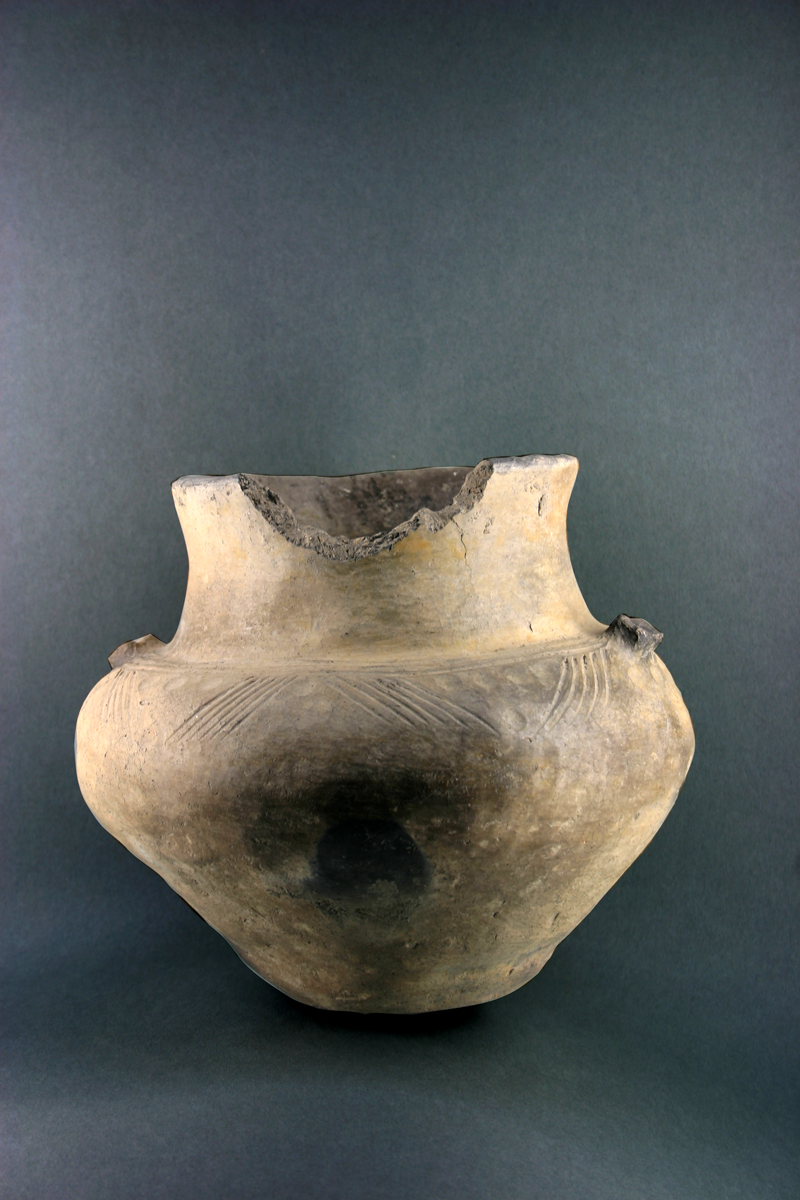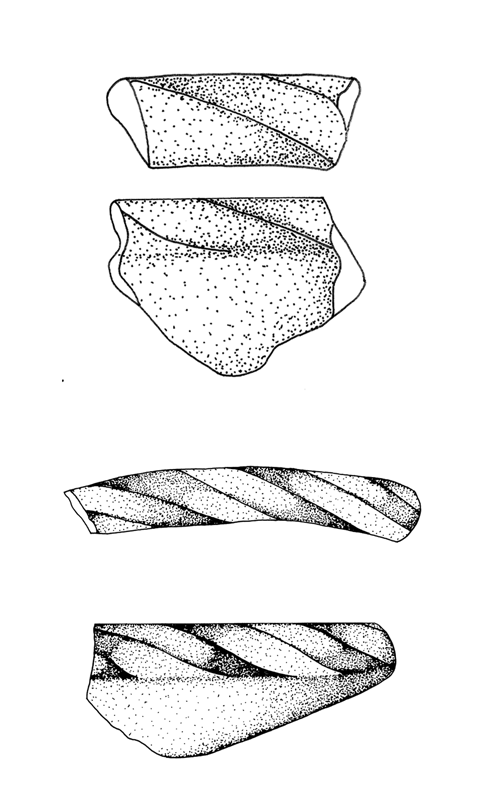Ancient luxury
At about 100 km distance from Berlin, Lossow had a central function as a cult site in the Early Iron Age. But already in Bronze Age it served as economic center and possibly as production site of high class ceramics. Lossow – situated in a strategically favorable situation above the river Oder – underwent a dynamic development in the following period: The Early Iron Age earth-rampart, whose height today is still up to 6 m, originally surrounded an area of 3-4 ha. Due to subsequent railway construction in 1844, 1919 and 1968, the potential area of investigation unfortunately has been diminished to 2,2 ha.
Lossow’s architectural structure is still to be investigated. Isolated excavation sites show traces of buildings, storage and rubbish pits, but cannot give sufficient information about the entire structure of Lossow yet. Therefore it is not possible to estimate the number of inhabitants. Obviously, castles like Lossow served both as strategic place as well as production and distribution centers. They also were locations of cult and worship, 63 devotement shafts with skeletons of animals and humans, partly cut in pieces, were already found. The location of these shafts seems deliberate, but it is supposed that there are possibly up to 200 on this site. The practice of devotement shafts is also documented in other places, such as the contemporary hillfort at Gzin (Poland, 300 km from Lossow), where 37 shafts with human remains were discovered.
The numerous excavation campaigns from 1844 on revealed Lossow as an important strategic and commercial site, whose particular importance still has to be evaluated by taking a closer look at the local production of goods and their distribution. Ceramics are ideal products for this purpose, because they are numerous and the origin of their highly individual material is easy to identify by checking local clay occurrences. Their shape also gives valuable information about their possible origin. A specific type of this time is the so-called turban-edged plate, a ceramic object that is characterized by its twisted edge which resembles the edges of turbans from Moghul India. The prestigiously furnished burial ground at Müllrose – at 10 km distance from Lossow – contained high quality products among its grave goods. This obvious display of wealth has led to suppose that it has been in close connection with Lossow. The burial ground at Lossow itself (800 m outside the rampart) was only discovered in 2011 and excavations still continue.
One question to answer is if Lossow was the production site or just the marketplace for these high quality ceramics. Traces of another handcraft were also found at Lossow: casting molds for the production of bronze objects, fragments of a pair of bellows and a melting pot reveal a highly developed standard of bronze metallurgy. Therefore a focus of the investigation is on increasing quality standards. Production improvement hints at a greater distribution of goods by trade and other forms of exchange: How far does regional and supra-regional trading of goods reach and which are the decisive channels of distribution?
Ines Beilke-Voigt has investigated the hillfort of Lossow since 2008. For the Excellence Cluster Topoi she is responsible for the research project (A-6-1) Lossow Near Frankfurt (Oder) – An Early Iron Age Cult Site. The results of the new excavation campaigns have been published in two volumes already. The third volume of “Lossower Forschungen” will be printed in December 2013.
RELATED LINKS
Publications by Ines Beilke-Voigt
Research projects:
(A-6-1) Lossow near Frankfurt (Oder) – An early Iron Age cult site
Lossow bei Frankfurt (Oder) – Eine früheisenzeitliche Kultstätte in der antiken Randzone
Read more articles in TOPOI FEATURE


